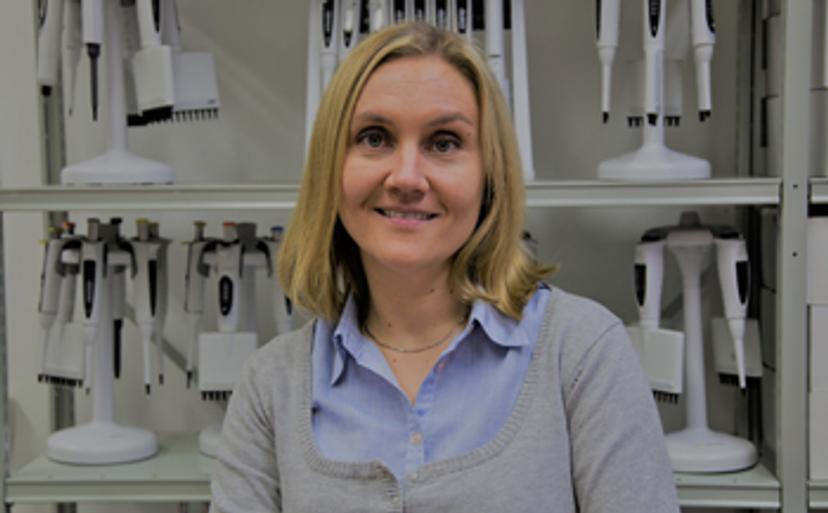Ways to avoid cell contamination: Pipetting tips you need to know
Choosing the right pipettes and pipette tips, along with good pipetting practices, can help eliminate cell contamination
30 Sept 2019

Of the many variables controlled in cell culture, one particular variable influences the entire experiment: contamination. A contributing factor for cell contamination that isn’t always on the radar even though it can silently affect cell health and influence measured data is contamination by pipetting.
When an experiment is designed, the choice of pipettes, pipette tips, and the pipetting procedures receive little attention. Even the blanket solution to avoid pipetting contamination – autoclaving – may not work as efficiently as typically believed. In this article, pipetting expert Dr. Emilia Varhimo, the Head of Product Management, Sartorius, explains contamination factors that scientists may be oblivious to during cell culture experiments and offers solutions to avoid pipetting contamination.
The first rule of cell culture: avoid contamination. Why is aseptic technique so integral to successful cell culture?
EV: Aseptic technique is the only way to achieve reliable and reproducible results. Contamination affects cell growth, metabolism, and well-being – the exact things scientists are interested in studying. Contaminated cell lines don’t have the desired characteristics and they function differently each time, depending on the severity of contamination. Also, you might end up studying the wrong organisms if contaminants overgrow your cells of interest.
What types of contaminants do scientists frequently encounter?
EV: Frequent sources of contamination are bacteria, yeasts, and mold. In cell culture work, the most difficult to detect and eradicate is Mycoplasma. Less common types of contamination include, for example, plastic leachables from lab consumables.
What are the common causes of cell contamination?
EV: A common source of contamination is bad pipetting practices, such as using a contaminated pipette and non-filter tips. Also, the lack of good laboratory practice is an issue, for example, inadequate decontamination of instruments such as incubators or laminar flow cabinets. To remove Mycoplasma, filtration with 0.1 µm instead of 0.2µm filter is needed.
3 types of pipetting contamination:
1. Pipette-to-sample contamination: The pipette or pipette tip contaminates the sample.
How to avoid it:
- Use sterilized filter tips, for example, SafetySpace tips from Sartorius, to keep the pipette body free from contaminants.
- Change the pipette tip after each sample.
- Autoclave or disinfect the pipette with ethanol regularly. Choose pipettes that are autoclave compatible. For example, Tacta from Sartorius.
2. Sample-to-pipette contamination: Pipetted samples enter the pipette body, contaminating it.
How to avoid it:
- Use filter tips or positive displacement tips to prevent samples from entering the pipette body.
- While pipetting, hold the pipette in a vertical position. Store pipette in an upright position.
- Tilt the bottle while pipetting.
- Avoid splashes of samples from entering the pipette by slowly releasing the button. Choose pipettes equipped with soft ejection feature. For example, Picus or Tacta from Sartorius.
3. Sample-to-sample contamination: Residue pipetted samples are carried over to the next sample. Typically occurs when the same tips are used multiple times.
How to avoid it:
- Change the pipette tip after each sample.
- Use filter tips or positive displacement tips to prevent samples from entering the pipette body, and into the next sample.
- Ensure pipette tips make a leak-tight seal on the pipette to avoid sample leaks. For example, Optifit Tips by Sartorius.
Are there any contamination factors scientists may not even be aware of?
EV: The efficiency of autoclaving is not often validated and if the autoclave is not functioning properly, autoclaved pipette tips might not be sterile. Pre-sterilized filter tips wrapped in protective wrapping are the safest choice to protect from surprises like this. The pre-sterilization process of quality pipette tips is validated regularly to ensure the efficiency of pre-sterilization.
How do the pipetting and dispensing tools from Sartorius enable scientists to more easily handle samples in a sterile environment?
EV: Choosing the right pipette and pipette tips can make aseptic workflows much easier. Sartorius pipettes are easy to clean and open without tools, which speeds up the routine cleaning. Because autoclaving is more efficient in removing contamination than wiping with ethanol, Sartorius mechanical pipettes are fully autoclavable, which means that you can reliably decontaminate the pipettes. The potential contamination risk caused by splashes in tip ejection is prevented by the soft tip ejection of Picus and Tacta models. The pre-sterilized filter tips protect your samples from cross-contamination. Sartorius tips are also wrapped in leak-tight wrapping, which means that no contamination from storage and delivery conditions can access the tips or the tip box.
How can scientists avoid contamination? What are your top tips for working aseptically?
EV: First off, good laboratory practice and careful planning of the work steps. Making sure to only keep the things you need for the specific workflow in the laminar flow cabinet and working with one cell culture at the time. Also, regularly testing for contaminations like Mycoplasma gives you peace of mind to trust your results. When working aseptically, money spent on pre-sterilized filter tips and sterile reagents is money well spent.
Do you use Sartorius products in your lab? Write a review today for your chance to win a $400 Amazon gift card>>


